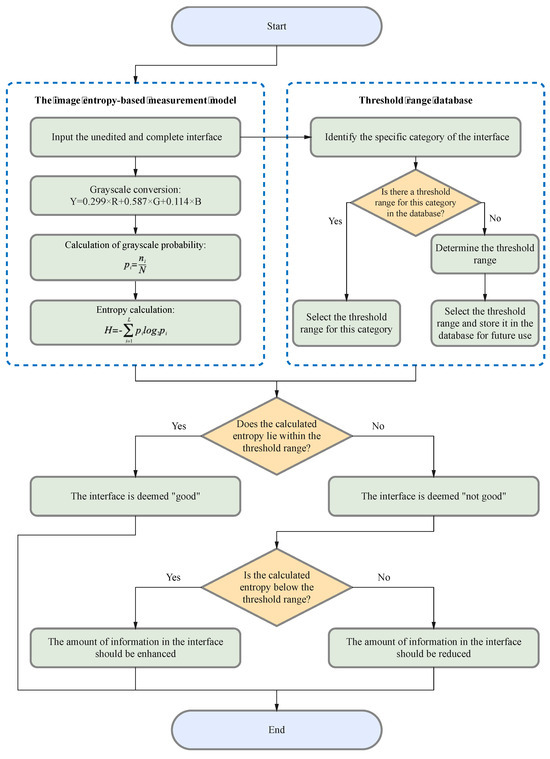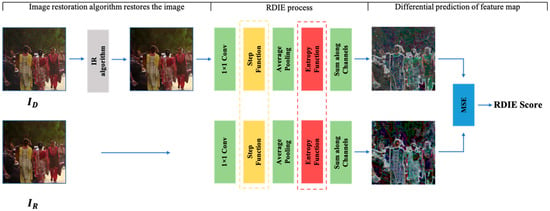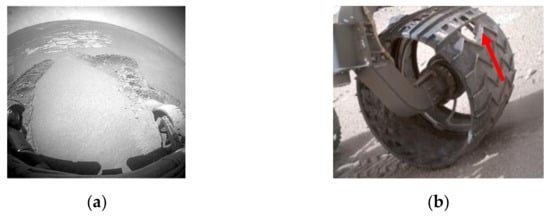Entropy in Image Analysis
Share This Topical Collection
Editor
 Dr. Amelia Carolina Sparavigna
Dr. Amelia Carolina Sparavigna
 Dr. Amelia Carolina Sparavigna
Dr. Amelia Carolina Sparavigna
E-Mail
Website
Collection Editor
Department of Applied Science and Technology, Polytechnic University of Turin, 10129 Turin, Italy
Interests: general physics and mathematics; optics; software; image processing applied to microscopy and satellite imagery
Special Issues, Collections and Topics in MDPI journals
Topical Collection Information
Dear Colleagues,
Image analysis is a fundamental task for extracting information from images acquired across a range of different devices. This analysis often needs numerical and analytical methods that are highly sophisticated, particularly for those applications in medicine, security, and remote sensing where the results of the processing consist of data of vital importance.
Since it is involved in numerous applications that require reliable quantitative results, image analysis has produced a large number of approaches and algorithms, sometimes limited to specific functions in a small range of tasks, sometimes generic enough to be applied to a wide range of tasks. In this framework, a key role can be played by entropy, in the form of Shannon entropy or generalized entropy, used directly in processing methods or in the evaluation of results, to maximize the success of a final decision support system.
Since active research in image processing is still engaged in the search for methods that are truly comparable to the abilities of human vision capabilities, I solicit your contribution to this Topical Collection of this journal, which is devoted to the use of entropy in extracting information from images and to the decision processes related to image analyses.
Dr. Amelia Carolina Sparavigna
Collection Editor
Manuscript Submission Information
Manuscripts should be submitted online at www.mdpi.com by registering and logging in to this website. Once you are registered, click here to go to the submission form. Manuscripts can be submitted until the deadline. All submissions that pass pre-check are peer-reviewed. Accepted papers will be published continuously in the journal (as soon as accepted) and will be listed together on the collection website. Research articles, review articles as well as short communications are invited. For planned papers, a title and short abstract (about 100 words) can be sent to the Editorial Office for announcement on this website.
Submitted manuscripts should not have been published previously, nor be under consideration for publication elsewhere (except conference proceedings papers). All manuscripts are thoroughly refereed through a single-blind peer-review process. A guide for authors and other relevant information for submission of manuscripts is available on the Instructions for Authors page. Entropy is an international peer-reviewed open access monthly journal published by MDPI.
Please visit the Instructions for Authors page before submitting a manuscript.
The Article Processing Charge (APC) for publication in this open access journal is 2600 CHF (Swiss Francs).
Submitted papers should be well formatted and use good English. Authors may use MDPI's
English editing service prior to publication or during author revisions.
Keywords
- image entropy
- Shannon entropy
- Tsallis entropy
- generalized entropies
- image processing
- image segmentation
- retinex methods
- medical imaging
- remote sensing
- security
Published Papers (4 papers)
Open AccessArticle
Image Entropy-Based Interface Evaluation Method for Nuclear Power Plants
by
Wenzhe Tang, Shanguang Chen, Yun Lin and Chengqi Xue
Viewed by 805
Abstract
The digital interface is crucial for nuclear plant operators, influencing their decision-making significantly. However, evaluations of these interfaces often overlook users’ decision-making performance; lack established standards, typically occurring after the design phase; and are unsuitable for large-scale assessments. Recognizing the vital role of
[...] Read more.
The digital interface is crucial for nuclear plant operators, influencing their decision-making significantly. However, evaluations of these interfaces often overlook users’ decision-making performance; lack established standards, typically occurring after the design phase; and are unsuitable for large-scale assessments. Recognizing the vital role of interface information, this paper built on our previous research and proposed a method tailored for nuclear power plant interfaces, utilizing image entropy to evaluate the impact of information on decision-making. A comparative analysis with an experimental evaluation method empirically validated the effectiveness of the proposed method. This research offers a unique decision-making-centric method to interface evaluation, providing a standardized, adaptable framework for various design phases and enabling extensive and rapid evaluations.
Full article
►▼
Show Figures
Open AccessArticle
Image Restoration Quality Assessment Based on Regional Differential Information Entropy
by
Zhiyu Wang, Jiayan Zhuang, Sichao Ye, Ningyuan Xu, Jiangjian Xiao and Chengbin Peng
Cited by 1 | Viewed by 1471
Abstract
With the development of image recovery models, especially those based on adversarial and perceptual losses, the detailed texture portions of images are being recovered more naturally. However, these restored images are similar but not identical in detail texture to their reference images. With
[...] Read more.
With the development of image recovery models, especially those based on adversarial and perceptual losses, the detailed texture portions of images are being recovered more naturally. However, these restored images are similar but not identical in detail texture to their reference images. With traditional image quality assessment methods, results with better subjective perceived quality often score lower in objective scoring. Assessment methods suffer from subjective and objective inconsistencies. This paper proposes a regional differential information entropy (RDIE) method for image quality assessment to address this problem. This approach allows better assessment of similar but not identical textural details and achieves good agreement with perceived quality. Neural networks are used to reshape the process of calculating information entropy, improving the speed and efficiency of the operation. Experiments conducted with this study’s image quality assessment dataset and the PIPAL dataset show that the proposed RDIE method yields a high degree of agreement with people’s average opinion scores compared with other image quality assessment metrics, proving that RDIE can better quantify the perceived quality of images.
Full article
►▼
Show Figures
Open AccessArticle
Why Shape Coding? Asymptotic Analysis of the Entropy Rate for Digital Images
by
Gangtao Xin, Pingyi Fan and Khaled B. Letaief
Cited by 2 | Viewed by 1041
Abstract
This paper focuses on the ultimate limit theory of image compression. It proves that for an image source, there exists a coding method with shapes that can achieve the entropy rate under a certain condition where the shape-pixel ratio in the encoder/decoder is
[...] Read more.
This paper focuses on the ultimate limit theory of image compression. It proves that for an image source, there exists a coding method with shapes that can achieve the entropy rate under a certain condition where the shape-pixel ratio in the encoder/decoder is
. Based on the new finding, an image coding framework with shapes is proposed and proved to be asymptotically optimal for stationary and ergodic processes. Moreover, the condition
of shape-pixel ratio in the encoder/decoder has been confirmed in the image database MNIST, which illustrates the soft compression with shape coding is a near-optimal scheme for lossless compression of images.
Full article
►▼
Show Figures
Open AccessArticle
Highly Accurate Visual Method of Mars Terrain Classification for Rovers Based on Novel Image Features
by
Fengtian Lv, Nan Li, Chuankai Liu, Haibo Gao, Liang Ding, Zongquan Deng and Guangjun Liu
Viewed by 1899
Abstract
It is important for Mars exploration rovers to achieve autonomous and safe mobility over rough terrain. Terrain classification can help rovers to select a safe terrain to traverse and avoid sinking and/or damaging the vehicle. Mars terrains are often classified using visual methods.
[...] Read more.
It is important for Mars exploration rovers to achieve autonomous and safe mobility over rough terrain. Terrain classification can help rovers to select a safe terrain to traverse and avoid sinking and/or damaging the vehicle. Mars terrains are often classified using visual methods. However, the accuracy of terrain classification has been less than 90% in read operations. A high-accuracy vision-based method for Mars terrain classification is presented in this paper. By analyzing Mars terrain characteristics, novel image features, including multiscale gray gradient-grade features, multiscale edges strength-grade features, multiscale frequency-domain mean amplitude features, multiscale spectrum symmetry features, and multiscale spectrum amplitude-moment features, are proposed that are specifically targeted for terrain classification. Three classifiers, K-nearest neighbor (KNN), support vector machine (SVM), and random forests (RF), are adopted to classify the terrain using the proposed features. The Mars image dataset MSLNet that was collected by the Mars Science Laboratory (MSL, Curiosity) rover is used to conduct terrain classification experiments. The resolution of Mars images in the dataset is 256 × 256. Experimental results indicate that the RF classifies Mars terrain at the highest level of accuracy of 94.66%.
Full article
►▼
Show Figures
Planned Papers
The below list represents only planned manuscripts. Some of these
manuscripts have not been received by the Editorial Office yet. Papers
submitted to MDPI journals are subject to peer-review.
Image analysis is a fundamental task for extracting information from images acquired across a range of different devices. This analysis often needs numerical and analytical methods that are highly sophisticated, particularly for those applications in medicine, security, and remote sensing where the results of the processing consist of data of vital importance.
Since it is involved in numerous applications that require reliable quantitative results, image analysis has produced a large number of approaches and algorithms, sometimes limited to specific functions in a small range of tasks, sometimes generic enough to be applied to a wide range of tasks. In this framework, a key role can be played by entropy, in the form of Shannon entropy or generalized entropy, used directly in processing methods or in the evaluation of results to maximize the success of a final decision support system.
Since active research in image processing is still engaged in the search for methods that are truly comparable to the abilities of human vision capabilities, I solicit your contribution to this Topical Collection of this journal, which is devoted to the use of entropy to extract information from images and to the decision processes related to image analyses.










